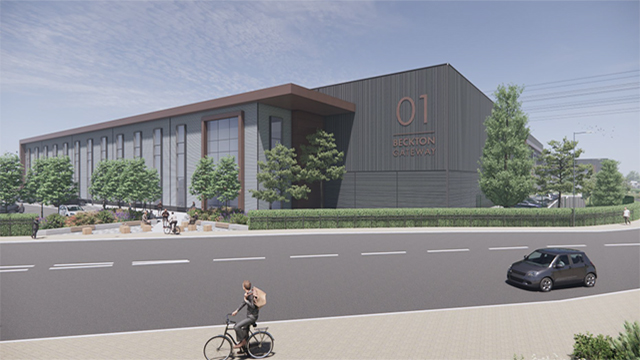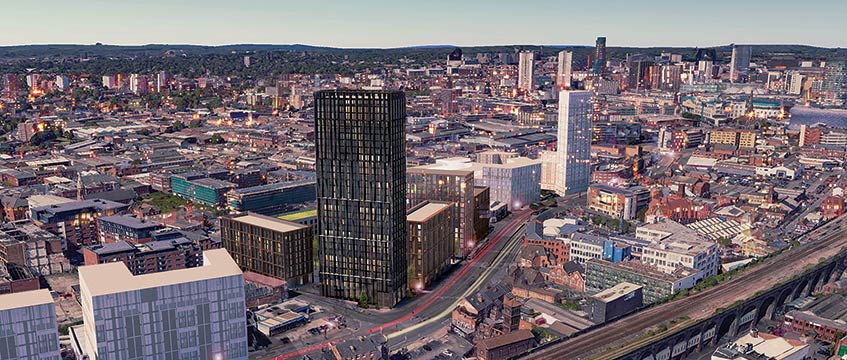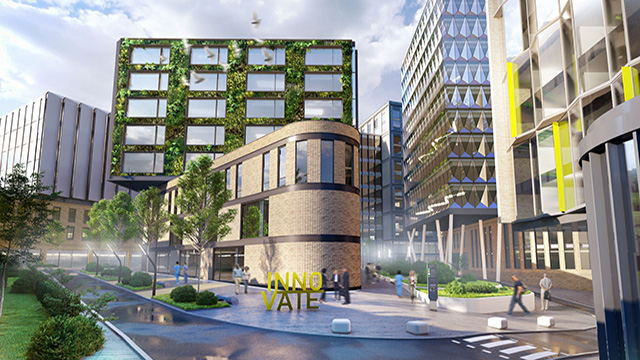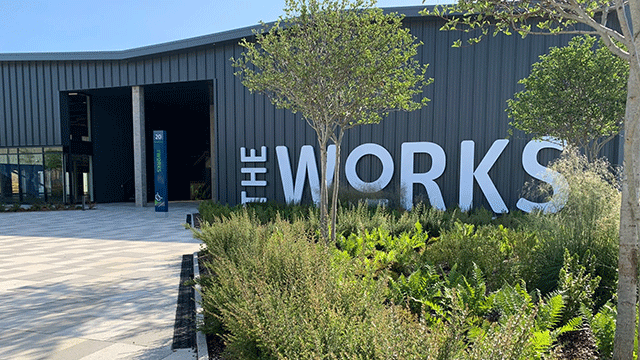by Neville Pearson
Planning constraints and apprehension about slowing retail sales may have put a cloud over development plans in central London for the time being, but further west the sun continues to shine. West London’s working and resident population is on the increase and is becoming more affluent. The area has superb communications, and available sites with development potential. Developers and retailers have every right to be optimistic about the area.
This optimism can best be illustrated by the fortunes of Queensway, less than 2 miles west of Oxford Street. This off-pitch shopping street has been revitalised by the opening of the 285,000-sq ft Whiteleys Shopping Centre in July. Retailers, both inside Whiteleys and in the area surrounding it, are as delighted by the level of sales as shoppers are by the diversity of goods on offer. In resisting the increasingly traditional list of safe, blue chip multiples which are being repeated in High Streets up and down the country, the Whiteleys Partnership have proved that there is still a strong demand for more and imaginative shopping in west London.
The west side of the capital already has fine shopping streets to rival those in the West End. Knightsbridge, High Street Kensington and King’s Road, Chelsea, are long established favourites for both Londoners and visitors and have no equals elsewhere in the north, south and east of London with the possible exception of Brent Cross. They reflect the comparatively greater affluence of the catchment population. A wider proportion of residents are in the higher income groups with more disposable income than the London average.
Other west London subregional centres such as Hammersmith, Ealing and Uxbridge are gaining larger working populations as well as affluence. New office and business space development means better retailing, too.
West London is also regarded as a more convenient place in which to live, being veined with strong communication routes for easy access in and out of town. Four underground lines, railway and arterial roads, including the Great West Road leading to the M4 and M3, and Uxbridge Road and Western Avenue leading to the M40, provide the backbone for strength and prosperity.
Unlike the West End, west London has the space to extend its shopping facilities. This area is, per capita, generally regarded as grossly undershopped. Retail floorspace stock in Kensington and Chelsea, for example, has experienced a decline from 623,000 m2 in 1978 to 587,500 m2 in 1986. During the period 1974-85 the annual average addition to stock was approximately 22,000 sq ft, which represents the second lowest level of any inner London borough. Other boroughs in west London, such as Hillingdon and Hounslow, have seen only marginal increases in retail floorspace despite leaping office development.
Developers are now taking great strides to redress the balance. A programme of proposed and permitted shopping centre schemes could increase the amount of retail floorspace in west London by 2m sq ft by 1994.
With Harrods as its focal point, Knightsbridge continues to be the premier British upmarket shopping street. It is unlikely to be greatly affected by the Whiteleys development, which will have more impact on shopping to the north of Hyde Park such as Notting Hill, Bayswater Road, Westbourne Grove and Harrow Road. Very little new retail development has been undertaken in Knightsbridge or nearby Kensington, although there are several redevelopment schemes in the pipeline.
The Prudential’s project at Knightsbridge Green offers the prospect of a substantial amount of new quality shopping, while the recent refurbishment of Barkers and the development of an 18,000-sq ft speciality centre on the Kensington Barracks site, Kensington Church Street, will strengthen this upmarket retail area.
Planning permission has been given for 33 shops totalling over 30,000 sq ft at Gloucester Park, SW7, and developers Cheval Property Management expect completion to be late 1991. The development will include 50,000 sq ft of offices and 104 flats.
Planning consent has yet to be granted for a mixed development centred on South Kensington Tube Station. South Kensington Arcade will provide 50,000 sq ft of retail comprising 50 units and a restaurant/bar on ground, first and second floors. Developers Tarmac/AMEC/Rosehaugh have also included 60,000 sq ft of offices and 137 flats for completion in three years.
The face of King’s Road, Chelsea, has been altered dramatically by the arrival of the multiples. Here, the high fashion boutiques of London’s designers have suffered a similar fate to some of those in Knightsbridge. They are being forced to close or relocate because of escalating rents, and this is on top of the prospect of a 93% increase in rate liability as a result of the change to the National Non-Domestic Rates.
Kings Walk Shopping Mall, formerly One Two Two, in the busiest and most fashionable part of King’s Road, has sought to bring back a little of the chic of Chelsea by moving in tenants such as Naff Naff, Echo, Paco, Nikos, Lee Bender and Ice House. Arranged on three levels and totalling 33,000 sq ft, developers County & District Properties opened Chelsea’s first covered shopping centre before Christmas 1988. However, a number of units are currently on the market, and so changes have been made to signs and entrance layout to attract King’s Road shoppers. Zone A rents range from £60 to £160 per sq ft.
Down by the river at Chelsea, the impressive Chelsea Harbour scheme provides 37,500 sq ft of retail space in an integrated self-contained village of apartments, town houses, hotel and offices. The shops were initially slow to let, but as the residential population has built up in this previously industrial and warehouse backwater, letting is virtually complete. A full range of shops and top restaurants are set around a 75-berth yacht harbour.
Chelsea Harbour languishes on the southernmost tip of the royal borough and it is unlikely to have any effect on shopping here or on the nearby borough of Hammersmith and Fulham. The western sections of King’s Road and Fulham have undergone minor improvements to the existing retail space, which is largely dominated by antique shops that seem to hold their own.
Fulham Broadway has undergone a facelift with new restaurants, an improved tube station and refurbishment of the tired Barber’s department store last year. The store has been reduced to half its size and the extra space has been developed into shops.
Hammersmith Tube Station is also currently the subject of major redevelopment. The island site on which it is located has been virtually levelled to make way for Centre West.
This predominently office development by Bredero Properties will also provide 60,000 sq ft of retailing in the shape of 35 shops, cafes and restaurants in a covered mall designed with the office and travelling public in mind.
Hammersmith is already established as the most successful west London office centre and its existing shopping, mainly centred on Kings Mall and King Street, has benefited from the expanding workforce. Centre West is being built to link in with King Street and the Mall, which already have major shopping draws like Marks & Spencer and Habitat.
Perhaps the shopping centre development to make the biggest impact in the whole of west London will be the White City Centre. Should the proposal by Balfour Beatty Developments go ahead, the 25-acre site scheme will change the face of Shepherd’s Bush and White City dramatically.
Sited on the under-utilised tract of land to the north of Shepherd’s Bush Green between Wood Lane and the M41 West Cross Route, the White City Centre will include 200,000 sq ft of offices, 31,000 sq ft of light industry, plus leisure and residential space. The 560,000-sq ft shopping proposals include two large stores of 120,000 sq ft, one of which will be a food supermarket, four medium-sized stores and a range of smaller shops. There will be a food fair, restaurants and creche; a monorail system will link the new centre with the existing shops in Shepherd’s Bush Green.
The centre has been designed around the requirements of the carborne shopper, although Shepherd’s Bush underground station is adjacent. In all, 3,850 parking spaces will link directly to the shopping malls and be accessed by a new road from the M41 link. This will enable shoppers from west London to take advantage of the new shops without giving rise to an unacceptable increase in queues and delays on the highways and to reduce congestion around the traffic black spot of Shepherd’s Bush roundabout.
Should permission be given, Balfour Beatty plan to start on site in early 1990 with an estimated opening date of late 1994. This will put pressure on Tops Estates, who paid £6.45m for the freehold of the 105,000-sq ft outdated Shepherd’s Bush Shopping Centre in March 1986 and have appointed Parway Estates Developments to begin a £7m refurbishment programme. The Concorde Centre is to be covered and modernised with a new entrance, supermarket and improved road access. Comprehensive redevelopment had to be ruled out because the centre is below four tower blocks containing 80 flats.
West London is unique in that, at present, no one centre dominates the shopping scene. Only Ealing, “The Queen of the West”, comes closest to grasping the crown. The growth of Ealing Broadway into a major subregional shopping centre has been rapid, and between 1975 and 1985 the rate of growth in retail space was over twice that experienced in Greater London as a whole.
The 300,000-sq ft Ealing Broadway Centre has been a phenomenal success since it opened in 1984. The centre is anchored by Bentalls and has a high proportion of quality retailers to reflect an affluent catchment population. The scheme exerted upward pressure on rents, now currently around £100 zone A. In 1987 the Waterglade Centre was built on the site of the old Bentalls store opposite the Ealing Broadway Centre, but it has found difficulty in attracting traders and shoppers; therefore, a programme of major external refurbishment is under way. It is hoped that the eight remaining units will be let by the time the alterations are completed in November. Plans for a larger second phase of the Waterglade Centre have been put on ice for the time being, but the town has managed to keep its title as Queen of the Suburbs, having successfully clawed back traders and shoppers from powerful competitors such as Brent Cross and Harrow.
Following the successful regeneration of Ealing Broadway, the council is now looking to stimulate development in Acton and Southall. The present shopping mix in Acton in particular is very poor and provides only a basic level of provision for local residents. The community is shifting from an industrial base to one with higher proportions of younger ABC1s.
The local authority is promoting its own Gateway supermarket and Market Hall development which will result in the pedestrianisation of both Market Place and King Street. In addition, a complementary 127,000-sq ft, non-supermarket shopping centre, The Oaks, is to be developed by Sheraton Securities International.
The Oaks will contain four major stores totalling 57,000 sq ft on two floors, plus 37 individual shops, five kiosks, a creche and 305 parking spaces. It is being designed to attract people from all socio-economic groups and age groups, but will not compete directly with Ealing Broadway and Hammersmith in fashion and major comparison goods, or with Chiswick in furniture and furnishings. It will concentrate instead on the higher quality non-food and speciality food mix to strengthen Acton’s pull away from the poor shopping of Shepherd’s Bush.
St Modwen Properties have been selected to redevelop Southall town centre to provide a £40m retail and residential scheme between the Broadway and Southall Station. The scheme will include 250,000 sq ft of shops, residential units, leisure facilities and a library. Building works are scheduled to start in early 1990. The requirements of its largely ethnic population are integral to the scheme’s success.
The shopping situation in Southall is similar to that of Hounslow three years ago. The need for a covered shopping centre in Hounslow had been obvious for many years and shoppers and traders were going elsewhere because of inadequate shopping units, chronic traffic problems and the additional incumbrance of deafening noise from aircraft heading for Heathrow Airport.
Hounslow’s first covered centre, the Treaty Centre, opened in September 1987 after more than 10 years of planning. Today the 250,000-sq ft centre of 36 retail units, a Debenhams department store and Gateway supermarket is almost completely let and trading well.
The centre has contributed substantially to the regeneration of central Hounslow, providing the town with much-needed facilities such as a public library and parking in addition to the superb range of shops.
It has helped to redress the leakage of trade to Kingston and has become a successful centre in its own right. However, evidence suggests that the town is still relatively undershopped. The total retail floorspace has grown only 4.8% per year compared with the Greater London average of 7%.
The nearby London Borough of Hillingdon is also regarded as relatively undershopped as it has one of the lowest levels of shopping in west London and a downward trend in the amount of retail floorspace coming on line. Uxbridge’s major shopping centre, the Pavilions, retains its popularity, while the success of a recent refurbishment of Chequers Square by Prudential has acted as the catalyst for a string of further proposals.
Attention is now turning to the sensitive High Street area which has a medieval street pattern and a mix of old and new buildings. Hillingdon council has prepared a development brief to cover 9 acres of Uxbridge town, of which 300,000 sq ft to 400,000 sq ft is earmarked for non-food retail development. The scheme, to be developed by part-owners Sun Alliance, will focus on a major department store and include speciality shops selling predominantly durable goods. The scheme also makes provision for the full pedestrianisation of the High Street.
Situated at the junction of the M25 and M40, 20 minutes from Heathrow and a tube ride from central London, the town is well-placed for further retail expansion. Yet, with the Secretary of State rejecting three major out-of-town retail developments nearby, and the fate of the proposed 500,000-sq ft Hanover Centre in Staines yet to be determined, it is still too early to predict what the impact will be, if any, of all this new shopping.
What is certain is that there are superb opportunities for exploiting the shopping potential in west London. There is no shortage of developers willing to seize upon those opportunities when, in the 1990s, consumer spending and retail rental growth are predicted to rise significantly.










